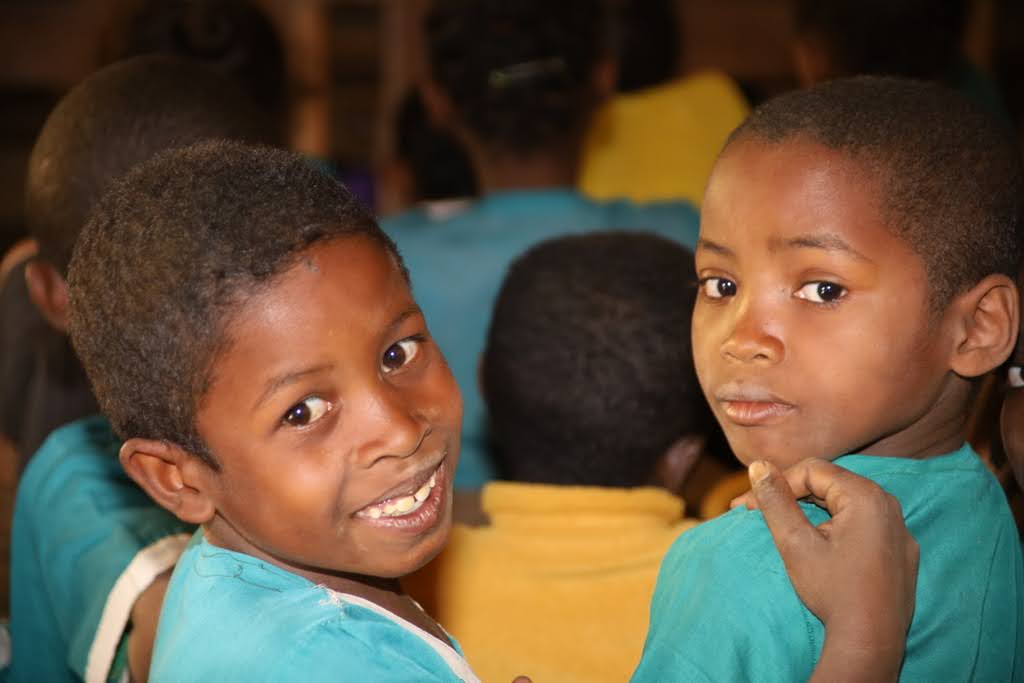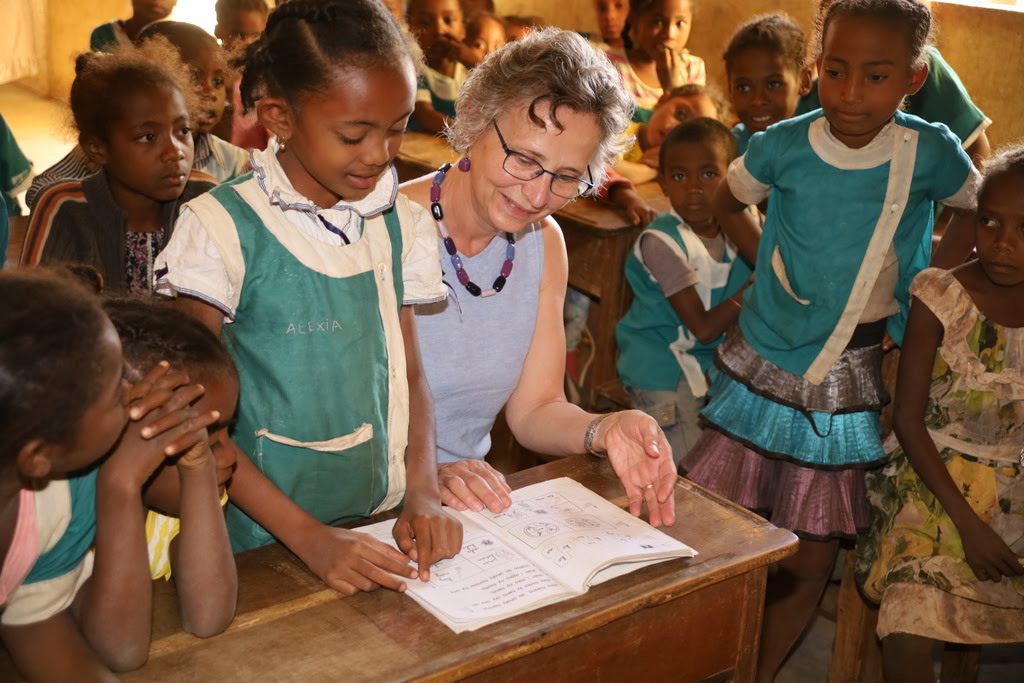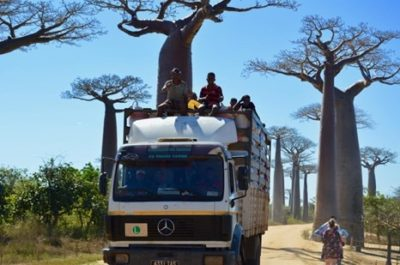MADAGASCAR
MADAGASCAR
Madagascar and the Diocese of Toliara
Situated off the southeast coast of Africa in the Indian Ocean, Madagascar is the fourth largest island in the world, famed for its unique wildlife. Despite a wealth of natural resources and tourism, Madagascar remains one of the world’s poorest, heavily dependent on foreign aid.
Madagascar has experienced political instability; coups, violent unrest and disputed elections. Devastating cyclones, floods, drought and famines addto economic hardships.
Its main industries are tourism, mining and agriculture; growing rice, coffee, vanilla and cloves.
There is minimal infrastructure, the majority of roads are unpaved; many becoming impassable in the rainy season.
Education Equals Hope partners with the Anglican Diocese of Toliara, in southern Madagascar helping break the cycle of poverty, improve job options and provide literate lay leaders for the church. Founded in 2013 the Diocese of Toliara is one of the youngest, poorest and most rapidly growing in the Anglican Communion of Churches. More information can be found on the Diocese website.

TOLIARA CHILD SPONSORSHIP
“ToliaraChild Sponsorship” is a program of the Educational Department of the Diocese of Toliara in Madagascar as part of the Anglican Communion.
WHY EDUCATE A CHILD
“How much better to get wisdom than gold,to get insight rather than silver!” Proverbs 16:16
Why Be a Sponsor?
$30.00 per month will make a difference in the lives of children and the communities in which they live.
“Dear children, let us not love with wordsor speech but with actions and in truth.”
1 John 3:18

THE BENEFITS OF SPONSORSHIP
Your donation will pay for:
- Enrollment & Tuition Fees
- School Supplies
- Uniforms, plus Days for Girls kit for older girls
- Medical Fees
Long Term Benefits:
• Breaking the cycle of poverty.
• Improved level of education.
• Improved job options.
• Improved quality of life.
• Fulfillment of personal potential.
What Does School Look Like in Madagascar?

How is literacy growing?
The Diocese of Toliarais located in southwest Madagascar, the poorest area on the island. On the island, one in three adults is illiterate. Approximately 40% of all adult women are illiterate. (Adult literacy is defined as the ability to read and write with understanding a short simple statement about everyday life.) However, this is changing rapidly.
About 40% of the population is children ages 0 to 14 years old. Currently for ages 15 to 24 the youth literacy rate for males is 80%. For young women, the literacy rate is 72%. These figures vary significantly especially between regions and rural and urban areas.
Do many students complete their education?
The reality is that during the course of their education, many children have to drop out of school because the family does not have the money for school fees and supplies or they have to help with daily life such as carrying water or helping raise animals or growing food. So, classes are filled with children and youth of various ages in each level of education. For example, in secondary school it is common to find young people between 15 and 22 years old completing their junior level or secondary level.
How long is the school day?
It’s a long day! A typical school schedule is Monday through Friday with Wednesday afternoon off. Classes are not held on Saturday or Sunday. Children are expected to be in class from 6:30 am to 12 noon and 2 pm to 5 or 6 pm.
Children leave their homes around 6 am to get to school. Usually, they walk together for what may be several miles. Older children may ride a bicycle if they have one.
When they arrive, the first thing they do is copy their lessons for the day into their copy book. The teacher has already been at school to put the day’s materials on the board. This is for all ages. THERE ARE NO BOOKS IN MOST SCHOOLS IN MADAGASCAR – FOR ANY SCHOOL LEVEL, all teaching is by lecture and memorization.
Children go home for lunch around 12 noon and return to school at 2 pm. In primary school, they leave for home around 4 or 5 in the afternoon. Those in junior and senior secondary school generally leave school around 6 pm and get home around 6:30 or 7 pm. Even though they get home at that hour, they have household chores and homework to do before going to bed.
How does the education system work?
Education in Madagascar is required for children ages 6 to 14 in those areas that have a school. Often there are no schools or one 3 classroom school for a rural area with hundreds of children.
There is a three-tier system:
Primary school is a five year program for children ages 5 to 11. Lessons are taught in Malagasy and French. The last year children must pass the National Exam called CEPE in order to enter Secondary School.
Secondary school has two parts:
Junior level is a four-year program for students ages 12 to 15. Students must pass a National Exam called BEPC and receive a certificate to proceed to the next level of education.
The senior level of secondary school is a three-year program for students ages 16 to 18. Upon completion of this program, students must pass the last National Exam to receive their baccalaureate (or high school diploma) and qualify to go on to University. Classes are taught in French.
CHILD SPONSORSHIP
The single most effective way to encourage your sponsored student is through letter writing.
Letter writing may seem like a novelty in today’s world, something fun to do if you’re into that type of thing, but it’s through letters, whether they be a quick note or a few pages long, handwritten or typed, with or without photos, that we send the consistent and deeply personal message, “You matter. I love you. I’m with you.”
Letter writing is a labor of love, for when we write a letter to our sponsored student we help their emotional and spiritual growth by:
- building self-esteem
- encouraging learning
- nurturing dreams
- providing a tangible expression of love
We know the letter-writing part of your sponsorship commitment can feel intimidating so we want you to know what the process looks like in Madagascar.
Who is the communications coordinator?
The coordinator for the Child Sponsorship program for the Diocese of Toliara is RAFIADANANA Dieu Donne Joseph. On a monthly basis, they initiate telephone contact with the parents of each child in the program. However, many families are located in rural areas and regular communication is difficult.

What about transport and mobile communications?
Most people in Madagascar use public transportation – small buses and vans called Taxi Brousses – to travel between towns. Taxi Brousses are also the quickest and most reliable way to send supplies and letters.
The clergy in the diocese have access to Wi-Fi. However, it is expensive and not accessible or reliable on a regular basis. Priests who live in remote areas, while they have telephones, often have to travel to a nearby town to visit a cyber café to use Wi-Fi for email.

How big is the diocese?
In square miles, the Diocese of Toliara can be compared to the State of Florida. That is as far as comparison can go. The Diocese of Toliara makes up the entire southern part of Madagascar. In all of Madagascar there is minimal infrastructure and that is especially so in southern Madagascar. The majority of roads in Madagascar are unpaved, with many becoming impassable in the rainy season.
In southern Madagascar, there is one ‘paved’ road in the whole diocese. It goes between Toliara on the west coast and Fort Dauphin further south on the east coast of the island. It is mostly degraded now and is only paved in places.
How do the Malagasy communicate?
As the communications coordinator for the Child Sponsorship Program, one of the significant challenges for Madame Holy is to facilitate a connection between a child and his or her sponsor. All communication between Mme. Holy and the parents of the child being sponsored is by telephone. Any written communications or pictures are sent to or from her via Taxi Brousses.
Besides the remote and difficult communication issues, the Malagasy are a people with an oral culture. There is not the tradition of written communication. So, it is a learning process and a challenge to engage the parents to encourage their children to send regular communication to their sponsors.
